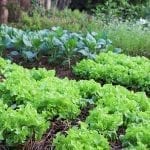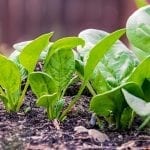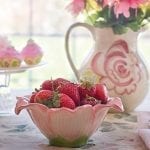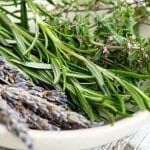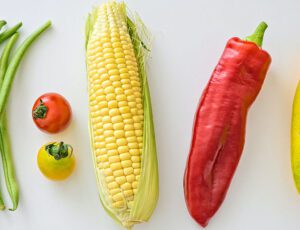
These 5 Delicious Edible Flowers Add Beautiful Flavor to Your Garden
Planting something and watching it grow is an immensely rewarding experience. Whether you’re growing gorgeous flowers to beautify your property or vegetables to feed your family, gardening is one of the best ways to make the most of your property.
But plants don’t have to just look pretty or taste good–some plants can do double-duty, and give you more bang for your buck. These 5 beautiful blooms will not only be a pleasure for the eye in your garden or indoor planters; they will also be a pleasure for your palate that will spice up anything from salads, to desserts, to coffee.
When these culinary beauties grace your table, your family and friends will never forget the experience.
1. Lavender
Lavender is a beautiful, graceful plant with silvery foliage and clusters of fragrant lavender-colored flowers. It is hardy as a perennial in USDA Hardiness Zones 5b through 8a, which means that it will thrive in a large portion of the U.S.
Lavender’s one-of-a-kind fragrance makes it ideal for everything from sachets, to homemade soaps and candles, to dried flower bundles and wreaths. But not everyone knows that this fragrant beauty is also delicious!
Lavender adds wonderful flavor to foods such as sweet breads and ice cream. Our team member Melissa and her family absolutely love this recipe for creamy vanilla cheesecake with lavender syrup, and Melissa says that making the syrup fills the whole house with the scent of fresh-cut flowers.
The syrup from this recipe also adds a yummy touch to coffee or tea, or drizzled over ice cream. With its beauty, fragrance and flavor, lavender is a flower trifecta.
Munstead lavender (Lavandula angustifolia ‘Munstead’) is the most popular lavender for culinary use.Click here to see an article about growing culinary lavender.
2. Violas

Many types of violas are edible, including certain types of violets and pansies. Viola odorata , also called “sweet violet” or “English violet,” is perennial in USDA Hardiness Zones 4a through 8a.
It has blooms that are purple, white or pink in color, and that make delicious violet cake, violet tea or violet syrup. Whole blooms also look beautiful sitting on top of cupcakes or salads, or arranged on cakes.
Putting a single bloom on top of each cracker spread with cream cheese turns a ho-hum plate of appetizers into something exotic.
3. Calendula

Calendula is part of the marigold family. It has sunny yellow blooms with masses of narrow petals.
These edible petals are an eye-catching touch when sprinkled on top of cake frosting or salad. Calendula grows quickly and abundantly, and makes a lovely container plant.
The blooms are also well-suited for dried flower bouquets.
4. Borage

Borage (Borago officinalis) is an annual flower with silvery or green foliage and distinctive blue, dangling flowers. It makes an excellent flower border or grouping in your garden, where you can enjoy its lovely fragrance.
It is also well-suited for making dried flower bouquets. Borage’s flowers make a scrumptious addition to salads, because their blue color really pops when you put them on top of salad greens.
The flowers’ subtle cucumber-like flavor also takes your salad up a notch.
5. Nasturtium

Nasturtium comes in a variety of colors, including white, orange, yellow and red. Nasturtium officinale is a perennial in USDA Hardiness Zones 3a to 11a, which covers the entire continenental United States.
It has small, beautiful, white flowers. Other varieties of nasturtium have larger, more colorful flowers, and make good annual container plants. It’s flowers and leaves have a distinctive peppery flavor that will spice up your salad.
Tips for Using Edible Flowers
Edible flowers are fun and delicious. But, just like anything you bring to your table, it’s important to make the right choices to ensure that you’re getting something that’s both tasty and healthy. Here are some tips:
If you want to grow your own edible blooms
- Grow them from seed or buy plants from an organic or culinary grower. This will ensure that the blooms don’t have potentially harmful insecticide on them.
- Do your research and make sure that they are edible. Some flower families have certain varieties that are edible, while other varieties are not.
- Find out which parts of the plant are edible. Some plants, such as nasturtium, have both blooms and leaves that are edible. Others, like sweet violets, have blooms that are edible, but the foliage is not. With other flowers, such as calendula and lavender, only the petals are edible.
- Use organic growing methods–skip the insecticide.
If you want to buy edible blooms
Buy only from a culinary source, such as an herb seller. Never eat blooms that you buy from a florist, because they may have been treated with insecticides, dyes, or other potentially dangerous chemicals.
Happy gardening!
Photos By Yoko Nekonomania, TeunSpaans
Stop by our website to learn more about our easy solutions to everyday problems, so you can spend less time cleaning and more time enjoying your garden!






